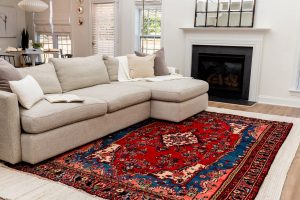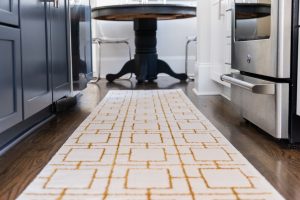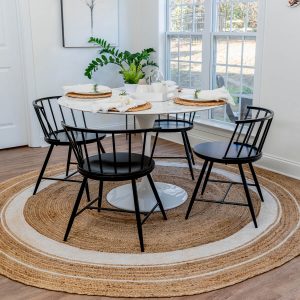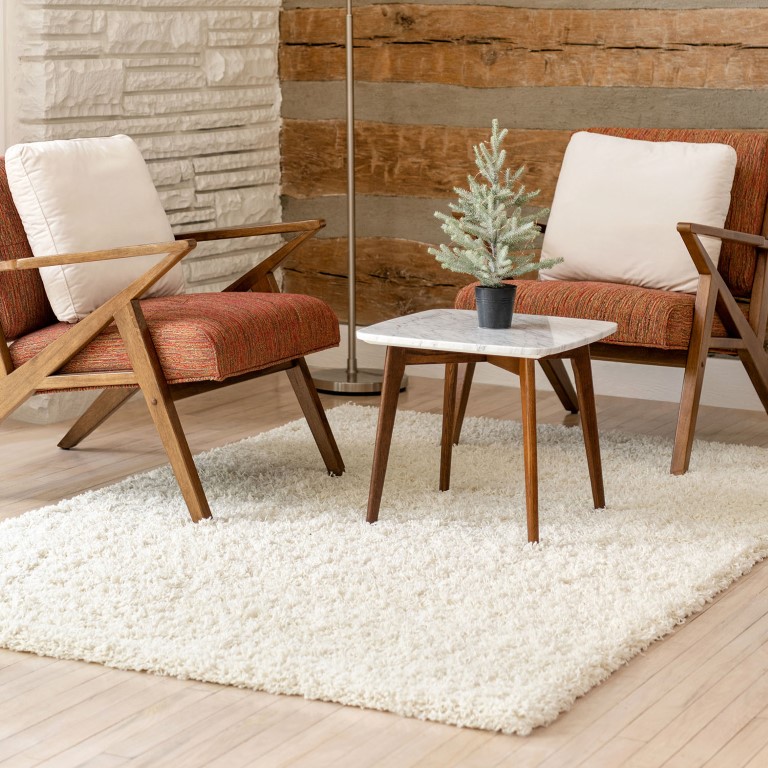Looking for a new rug is one of the most exciting parts of designing your home and one that can make the most significant impact. Choosing the best material for your rug will make your style shine and provide all the benefits you expect.
The most common rug materials on the market today are wool, cotton, jute and synthetic materials such as polyester or polypropylene. Continue reading to learn all you need to know to choose the best material for your rug!
Wool

A wool rug is an asset that will retain its value for a long time. Because of this, they are among the few often considered heirloom pieces and passed down generations.
These rugs are often handmade and loved for their diversity in being both luxuriously soft and highly durable, and long-lasting.
These large area rugs are often seen in dining and living rooms.
Pros: As a natural fiber, wool provides great insulation and comfort for your home. If handmade, wool rugs offer great return on investment.
Cons: Wool, like any natural fiber, can also absorb moisture, so may not be best for damp areas. There could be some shedding, and the colors may fade over time, requiring thoughtful care. Wool is also among the most expensive options.
Cotton

Cotton is a natural, inexpensive alternative to wool. They are sturdy yet soft and some can even be put in the washing machine, making them very easy to clean.
Cotton rug are commonly used in high traffic areas such as doorways, kitchens, and bathrooms.
Pros: Soft, hypoallergenic, and super easy to clean.
Cons: Cotton, like your favorite T-Shirt, will wear down over time.
Synthetic

Synthetic rugs can mimic many of the benefits of luxury materials at a more affordable cost. These versatile machine-made rugs offer comfort and durability from a manufactured process.
When choosing between the materials of synthetic rugs, you should first consider the texture your want. Soft for a baby to play on, or durable to wipe boots on?
Standard synthetic human-made fibers most commonly include polyester and polypropylene materials.
Polypropylene: Vibrant, soft, and affordable, stain-resistant, easy to clean, and can withstand indoor and outdoor weathering.
Polyester: These rugs have the same benefits as polypropylene rugs, except they are slightly softer, lighter, more absorbent, and less durable.
These family-friendly synthetic materials are good affordable area rugs, as runners, bathmats, or any indoor location.
Pros: Synthetic fibers offer are low cost, easy to clean, non-fading, often stain-resistant and will be durable in high-traffic spaces.
Cons: A synthetic rug is not an heirloom item that can be passed down from one generation to another, all while holding or increasing in value with age.
Jute

Jute is a natural grass-like fiber that can be spun into coarse, strong threads for a highly tough and durable water-resistant rug. Since they’re made from strong plant fiber materials, they hold up well against high use and harsh weather as outdoor rugs.
Jute rugs can be used indoors for a natural look and even outdoors on patios and porches.
Pros: Strong, eco-friendly, and outdoor safe.
Cons: Can be coarse and difficult to clean – especially if dyed, requiring a gentle touch.
Ultimately, the best material for your rug will be the one that fits your budget, space and the way you plan to use it. Fortunately, you now know your options. And armed with the tips above, you’ll be able to make the best decision for you and your home! You can also call our Customer Service toll-free line (24/7, 365) to speak with professional sales representatives who can assist you in making this decision easier for you.
We want to see what you come up with, so don’t forget to tag us on Instagram @rugsdotcom with your favorite kids room rug pictures.
*NOTE – Safety is of most importance. Be sure to have an anti-slip pad under your rug to prevent it from moving and sliding!

